
Tunis is the capital and largest city of Tunisia. The greater metropolitan area of Tunis, often referred to as "Grand Tunis", has about 2,700,000 inhabitants. As of 2020, it is the third-largest city in the Maghreb region and the eleventh-largest in the Arab world.

Djerba, also transliterated as Jerba or Jarbah, is a Tunisian island and the largest island of North Africa at 514 square kilometers (198 sq mi), in the Gulf of Gabès, off the coast of Tunisia. It had a population of 139,544 at the 2004 census, which rose to 163,726 at the 2014 census. Citing its long and unique history, Tunisia has sought UNESCO World Heritage status protections for the island, and, in 2023, Djerba was officially designated a World Heritage Site.
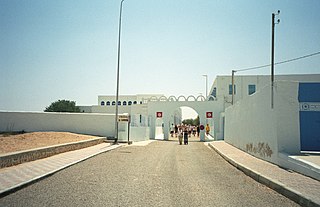
The Ghriba synagogue bombing was carried out by Niser bin Muhammad Nasr Nawar on the El Ghriba synagogue in Tunisia in 2002.
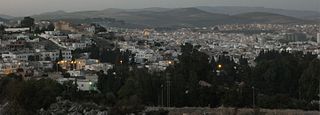
Béja is a city in Tunisia. It is the capital of the Béja Governorate. It is located 105 kilometers (65 mi) from Tunis, between the Medjerdah River and the Mediterranean, against the foothills of the Khroumire, the town of Béja is situated on the sides of Djebel Acheb, facing the greening meadows, its white terraces and red roofs dominated by the imposing ruins of the old Roman fortress.

Houmt Souk, meaning literally: "The Market neighbourhood", is a commune and the main town of the island of Djerba, Tunisia. A popular tourist destination, it is best known for its traditional souk and the Aghlabid fortress.

The Battle of Djerba took place in May 1560 near the island of Djerba, Tunisia. The Ottomans under Piyale Pasha's command overwhelmed a large joint Christian Alliance fleet, composed chiefly of Spanish, Papal, Genoese, Maltese, and Neapolitan forces. The allies lost 27 galleys and some smaller vessels as well as the fortified island of Djerba. This victory marked perhaps the high point of Ottoman power in the Mediterranean Sea.

Fes el Bali is the oldest walled part of Fez, Morocco. Fes el Bali was founded as the capital of the Idrisid dynasty between 789 and 808 AD. UNESCO listed Fes el Bali, along with Fes Jdid, as a World Heritage Site in 1981 under the name Medina of Fez. The World Heritage Site includes Fes el Bali's urban fabric and walls as well as a buffer zone outside of the walls that is intended to preserve the visual integrity of the location. Fes el Bali is, along with Fes Jdid and the French-created Ville Nouvelle or “New Town”, one of the three main districts in Fez.
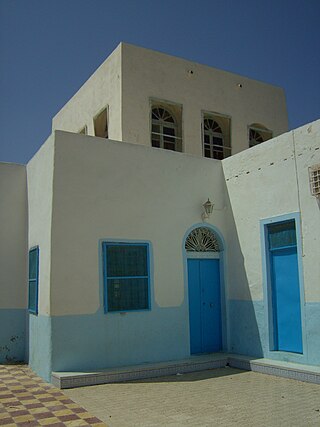
The Synagogue of the Priests of Djirt is a synagogue located in Hara Kbira "Greater Neighborhood", the Jewish neighbourhood located on the outskirts of Houmt El Souk, on the Tunisian island of Djerba.
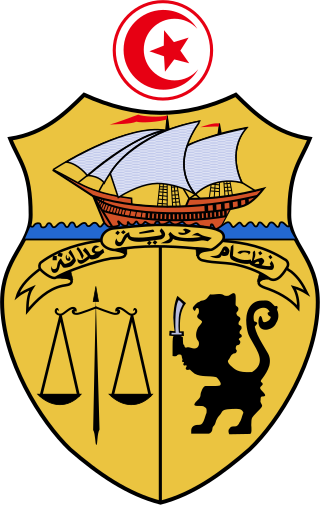
The delegations of Tunisia are the second level administrative divisions of Tunisia between the governorates and the sectors (imadats). As of 2006 there were 24 governorates which were divided into 264 delegations and further divided into 2073 sectors. The delegations are listed below, organized by governorate.

Tourism in Tunisia is an industry that generates around 9.4 million arrivals per year in 2016-2020, which makes it one of the most visited countries in Africa. Tunisia has been an attractive destination for tourists since the beginning of the 1960s.

Tamazight of Djerba, Chelha of Djerba, or Djerbi is a Berber language of the Eastern Maghreb, spoken on the island of Djerba, in Tunisia. It is a component of what is regularly denominated Tunisian “Chelha” or "Shilha" in the south of the country.
Hammuda Pasha Bey, died April 13, 1666 was the second Bey of the Tunisian Muradid dynasty. He reigned from 1631 until his death.
Tunisia, officially the Tunisian Republic, is the northernmost country in Africa. It is a Maghreb country and is bordered by Algeria to the west, Libya to the southeast, and the Mediterranean Sea to the north and east. Its area is almost 165,000 square kilometres (64,000 sq mi), with an estimated population of just over 10.4 million. Its name is derived from the capital Tunis located in the north-east.

The Sfax medina is the medina quarter of the Tunisian city of Sfax. It was built by Aghlabid prince Abu Abbass Muhammad between 849 and 851. The medina is home to about 113,000 residents, and is dominated by the Great Mosque of Sfax.

The Libyco-Punic Mausoleum of Dougga is an ancient mausoleum located in Dougga, Tunisia. It is one of three examples of the royal architecture of Numidia, which is in a good state of preservation and dates to the second century BC. It was restored by the government of French Tunisia between 1908 and 1910.

Souk El Attarine, or souk of spice traders, is the name by which most spice markets are referred to in Arab countries in the Middle East. Old cities were often divided into segments based on what was sold - meat, spices, fabrics and so on - and attarine, which means spice traders in Arabic, refers to the spice market.

The Mosque of the Turks, also known as Jemaa ettrouk, is a Tunisian historical mosque located in the center of Houmt Essouk in the island of Djerba.
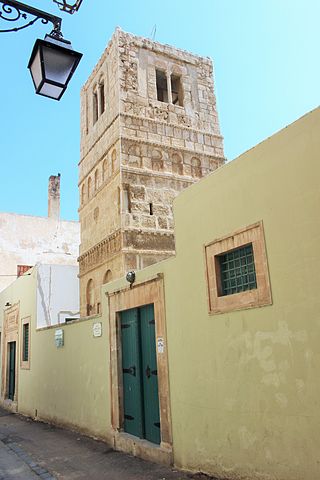
Sidi Amar Kammoun mausoleum is one of the most important mausoleums of the medina of Sfax, Tunisia.























